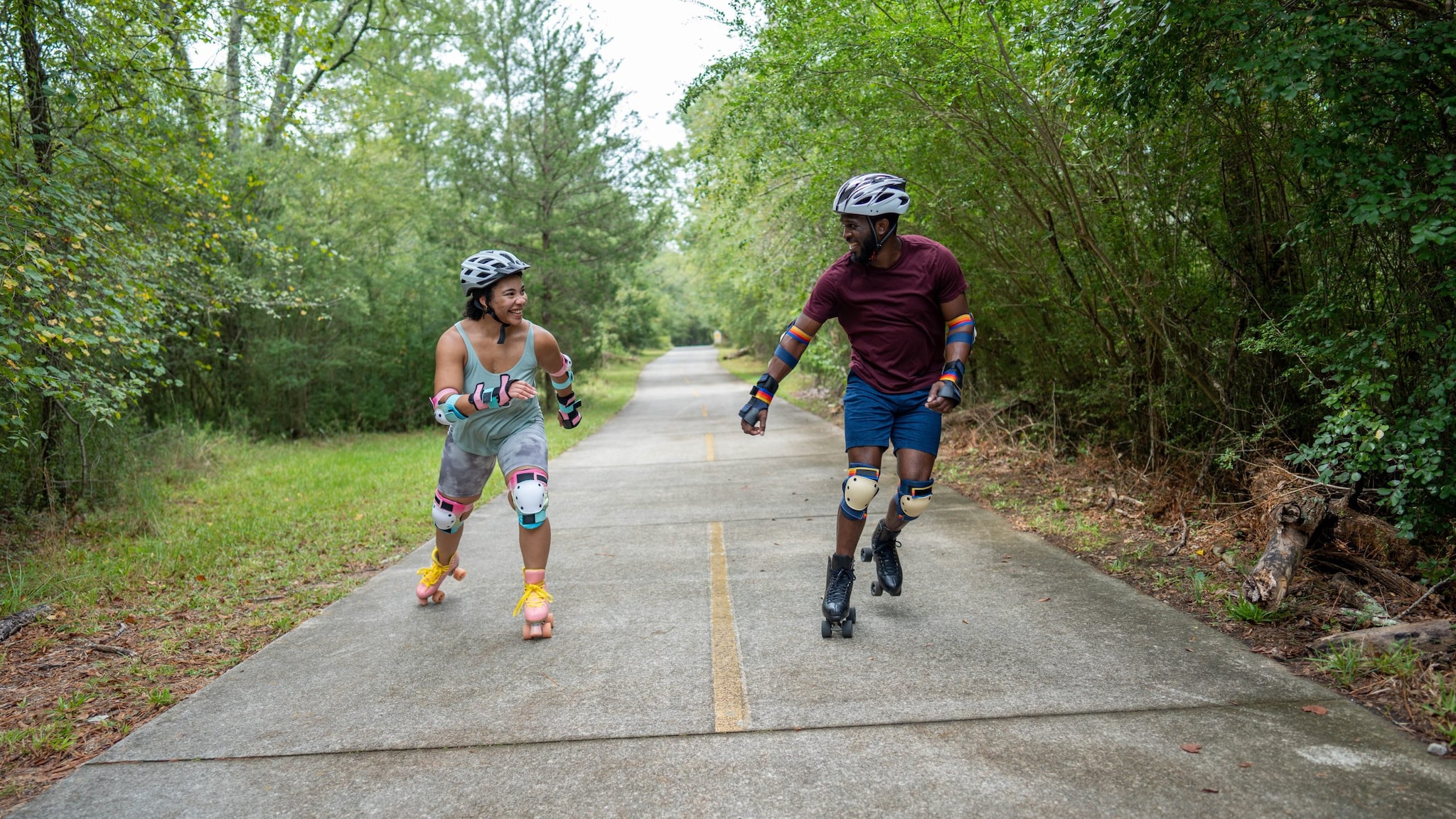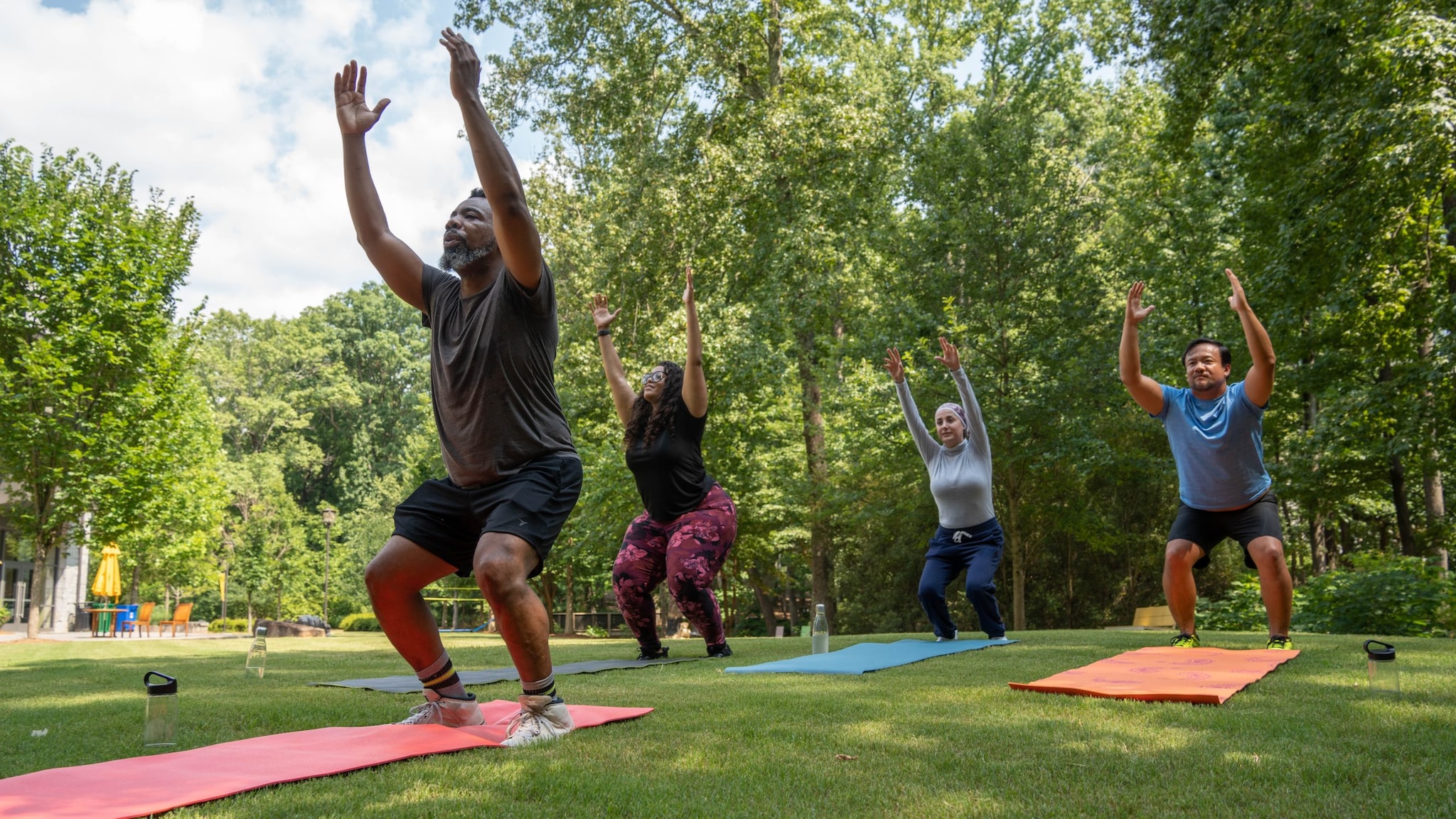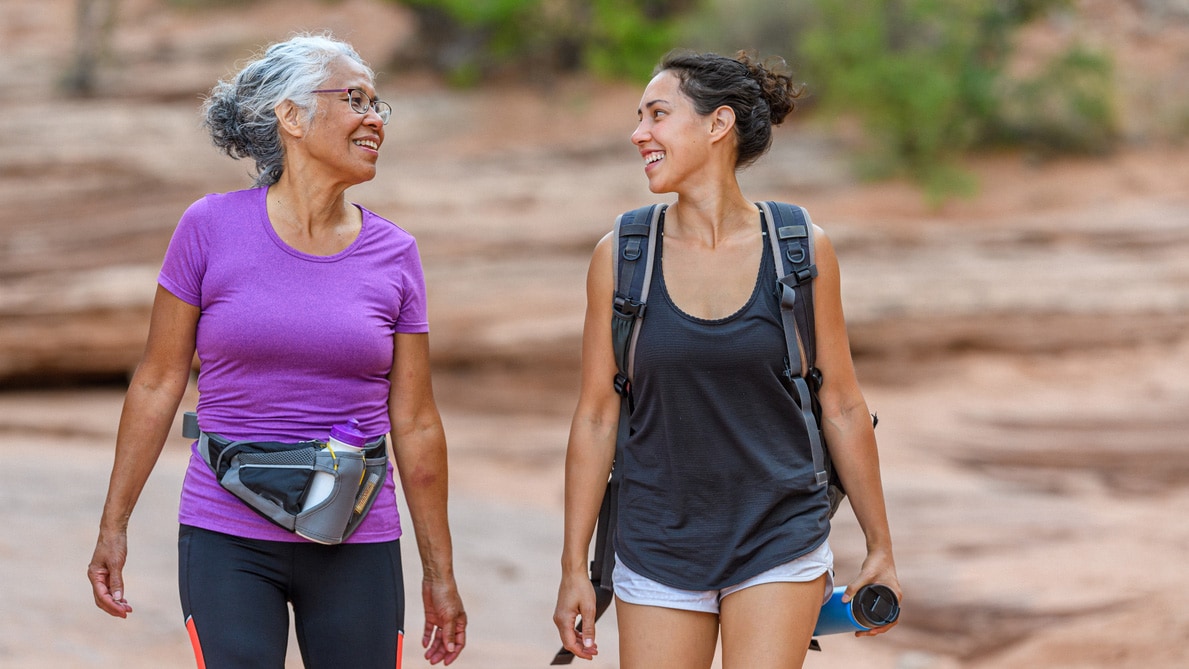Key points
- Well-designed parks and recreation facilities offer many benefits.
- People with safe access to parks and recreation facilities tend to be more physically active than those with barriers to access.
- Learn more about what you can do to increase access to park, trails, and greenways.

Background
Parks and trails provide places for people to enjoy the outdoors and experience the benefits of physical activity.
People with safe access to parks and recreation facilities tend to be more physically active than individuals with barriers to access. People are more likely to walk or bike to parks or recreational facilities if the individuals live nearby. In addition, people need to feel safe getting there and while using the park or recreational facilities.
Moreover, safe access to parks, trails, and greenways can increase physical activity for everyone. Also, accessible infrastructure, facilities, and activities can encourage physical activity.
Benefits
Well-designed parks and recreation facilities provide places to:
- Be physically active, which improves physical and mental health.
- Socialize, which improves social connection.
Food service guidelines in venues within parks and recreation facilities can support healthy eating. Examples of venues include:
- Concession stands
- Vending machines
- Snack bars
- Cafes, and/or cafeterias
Food service guidelines can also be used for programs held at parks and recreation facilities. An example might be snacks for afterschool or community athletic programs.
Health benefit infographics
Investments in park, trail, and greenway infrastructure can produce economic benefits. However, investments require attention to community concerns, such as:
- Property-tax increases.
- Potentially displacing residents or small businesses.
- Inequities in distributing resources for projects.
Parks can:
- Reduce air and water pollution.
- Protect communities from flooding.
- Lessen urban heat islands.
- Reduce illness and injury risk by providing safe spaces to be active.

Expanding access
The Community Preventive Services Task Force (CPSTF) recommends combining park, trail, and greenway infrastructure improvements with activities to increase:
- Awareness
- Access
- Engagement
- Programming
Together, they can increase physical activity and use of parks, trails, and greenways.
These may include:
- Developing new parks, trails, or greenways.
- Adding, upgrading, or improving parks, trails, or greenways.
- Enhancing parks, trails, and greenways.
Enhancements could include:
- Accessibility features
- Athletic fields/courts
- Bike lanes
- Crosswalks
- Playground equipment
- Athletic equipment
- Landscaping
Community engagement
Engage the community to ensure participation and shared decision-making in planning. This could include:
- Surveying the community.
- Conducting needs assessments.
- Creating a community advisory board.
- Conducting community outreach at events.
Programming
Offer programs with structured opportunities for physical activity and social interaction. Examples could include:
- Walking groups
- Exercise classes
- Organized sports
Public awareness
Inform community members about programs and services through public awareness activities such as:
- Banners
- Flyers
- Promotional campaigns
- Event days
- Social media
Equitable access
Improve access to parks, trails, and greenways, possibly with:
- Enhancements for people with disabilities.
- Transportation connections.
- Street crossings.
- Expanded hours of operation.
Implementation resource
The CPSTF expressed two concerns that communities may need to consider as they improve park infrastructure and programming:
Ensure resources are distributed equitably to communities with greater needs. This includes resources to create and support infrastructure improvements and additional interventions.
Guard against potentially economically displacing residents from neighborhoods where they have lived for years. This could happen if infrastructure improvements increase community appeal and housing demand.
Creating park plans centered on ensuring safe, accessible parks that serve everyone can address these concerns.
- Collect community input.
- Engage leaders in multiple sectors such as park and recreation, public health, urban planning, development, transportation, and housing. These leaders can create safeguards to protect established residents.
- Collect data and monitor how well safeguards work over time.
- Address issues that arise.
Community design
What's being done in one community

Access to parks and trails encourages people to be more active.
Outdoor Recreation Planning in New Mexico
In Santa Fe, a community health profile highlighted need for better infrastructure or transportation and outdoor recreation. City officials worked with the National Park Service to create the profile. City leaders, partners, and community members use this document to plan for more equitable access to parks and recreational spaces.
